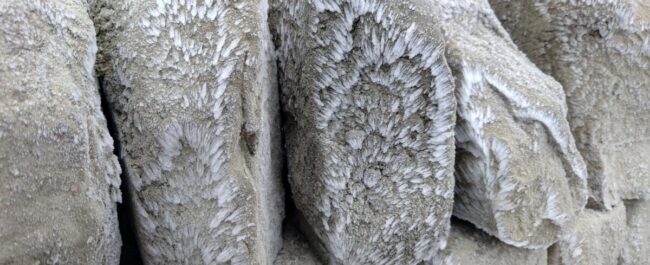Focus on – Dry Stone Walling Copes, Caps and Sedum
Dry stone walls need something heavy to cap them off. Traditional building methods say that the copestones that sit on top of the wall have two main functions. Firstly, they add weight to the wall underneath, binding the courses and the “skins” together. Secondly, they shed rain water down the sides. This prevents water from getting into the guts of the wall, reducing the risk of hearty becoming weathered. In winter, this can form into destructive ice.
There’s several ways to top off a dry stone wall and I use all three. These are: vertical copestones or copes; flat capstones or cap; and turf or sedum.
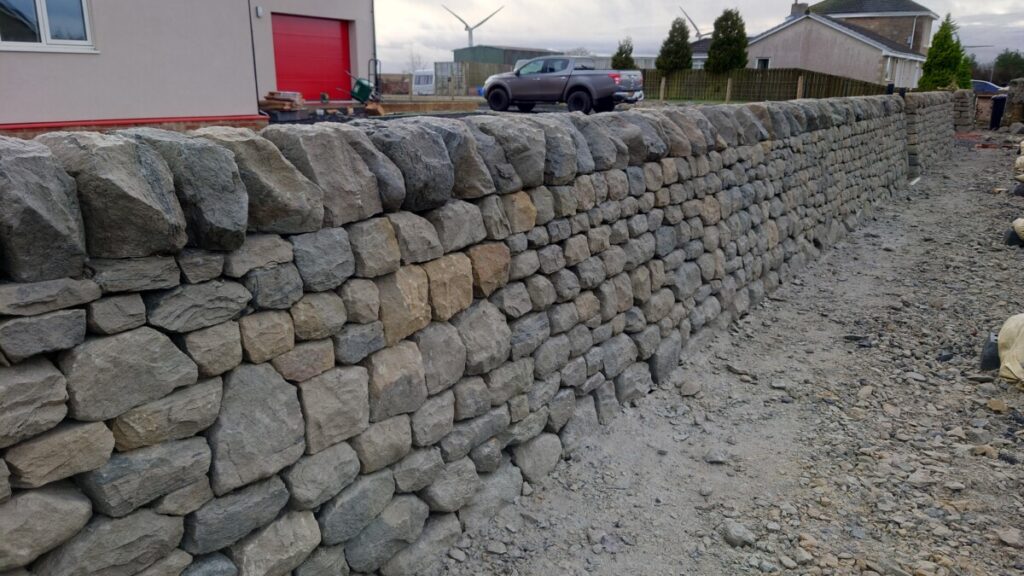
Copestones or copes on dry stone walls
The traditional way to top off a free-standing or retaining wall is place a row of large copestones.
These tend to be slightly wider than the width of the top of the wall; flat-bottomed; have sloping sides and be approximately 25cm/10inches tall.
I personally like a very clear line across the top of the copes. This is done because I think it looks really crisp. The sandstone that I tend to use can be easily dressed to size. Farm walls where speed of building is more important or the stone doesn’t dress easily, the copes will be a bit more randomly sized.
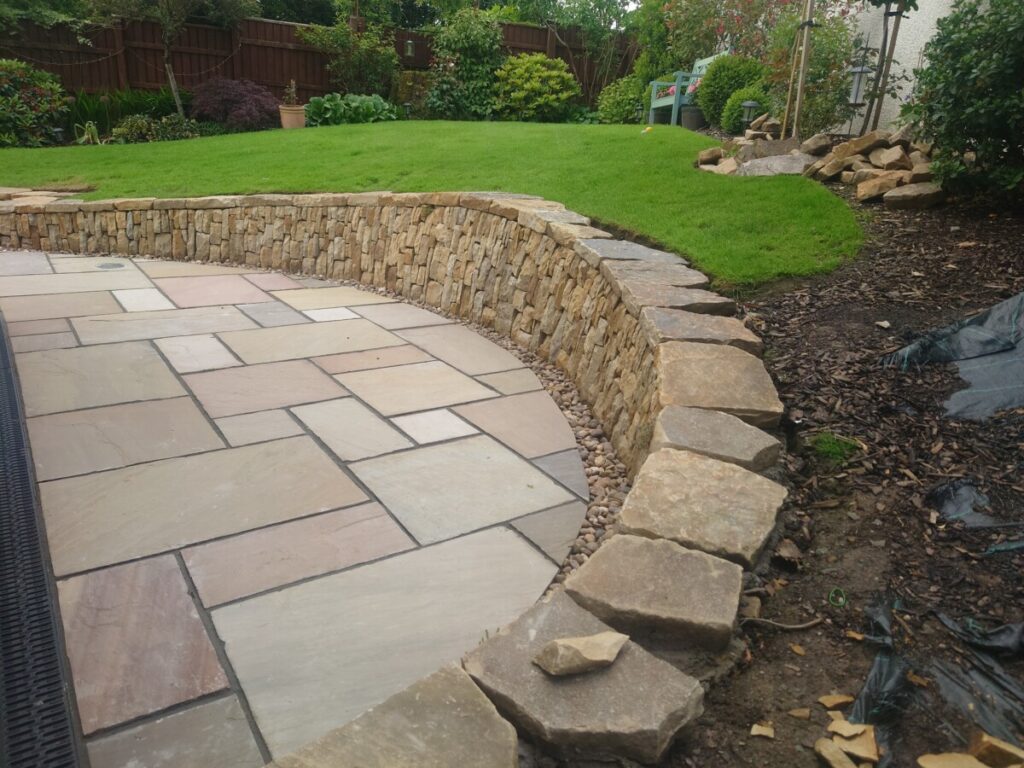
Capstones or caps on dry stone walls
Laying thick and heavy stones flat on the wall is maybe a more of a North American style, but I like to finish walls, and especially garden retaining walls with flat caps.
They do the same job as copes of adding weight to the top of the wall and shedding water.
I like to use flat caps in retaining walls in gardens as it gives the option of using the top of the wall as a seat. In most cases the stones are not square, so the spaces in between the stones can provide planting spaces.
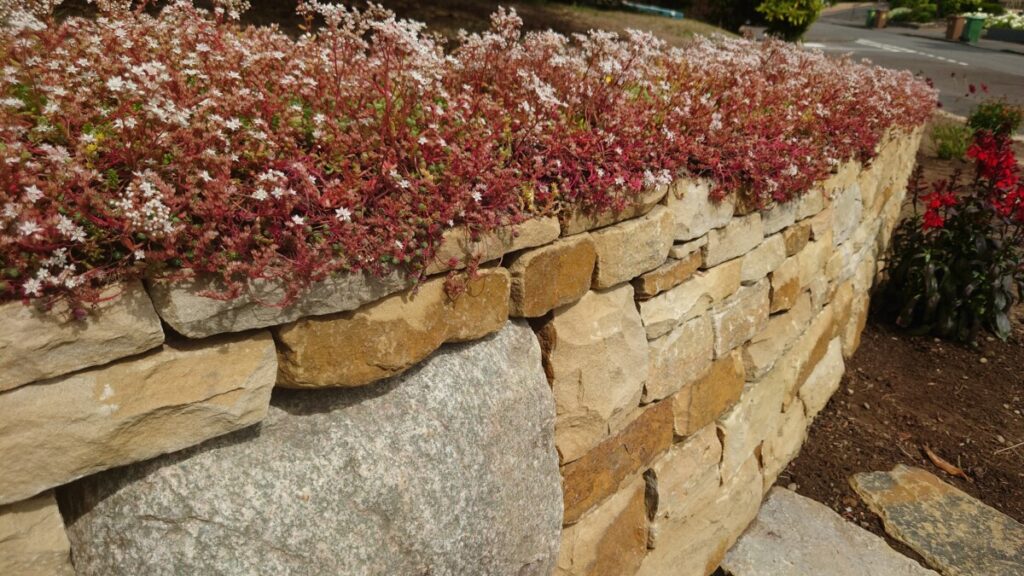
Sedum and turf
A traditional method of capping walls in part of the west of Scotland is to use thick pieces of turf to cover the top of the walls. This is usually because suitable stones for copes are not available, whereas turf is.
It’s pretty easy to apply – dig large and heavy sections of turf, and place on the wall.
An alternative option that I’ve used a lot this year is laying sedum mats on the wall. The sedum is a hardy perenial, alpine succulent. It comes in 2m by 0.5m mats and is designed for laying on green roofs but I’ve repurposed it to cap off walls. Laid on a thinnish bed of substrate, the sedum roots quickly, and needs minimal maintenance – just an occasional watering in warm periods.
It provides lovely colour through the year and is pretty nice to look at too!
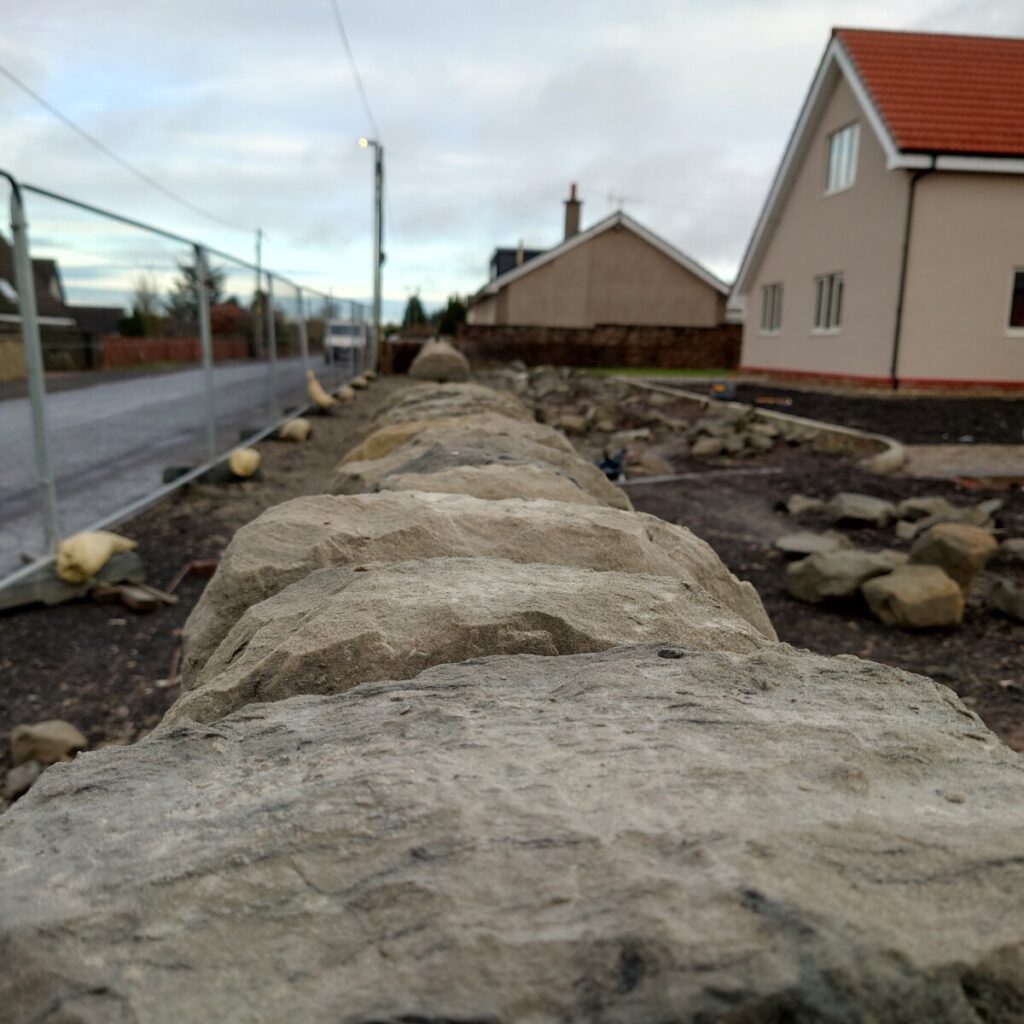
Ultimately the choice is down to the stone used, the client’s preference and the type and location of the job.
I like having various options to offer to clients though.
And there is still not many more pleasing things than a millimetre perfect top line, like the wall to the left.
The sedum I’ve used was supplied by Sedum Supply in Oswestry – www.sedumsupply.co.uk

